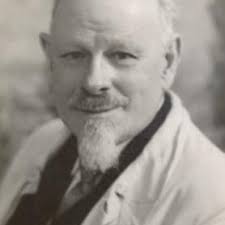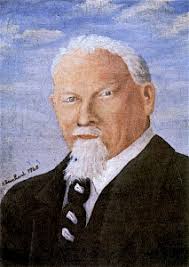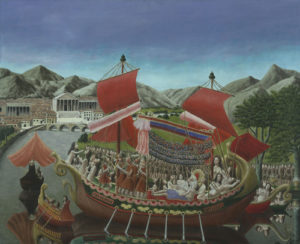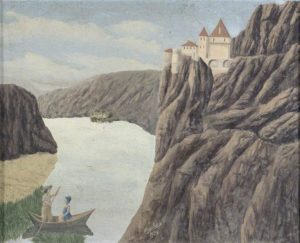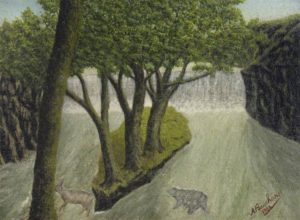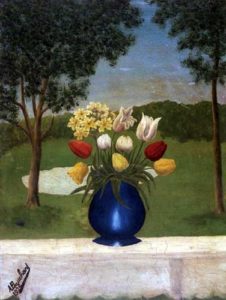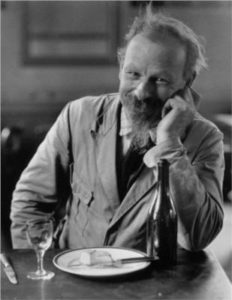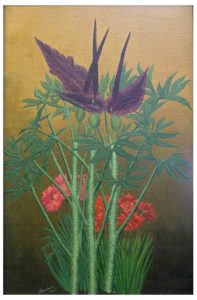The artist was born on April 24, 1873 in Chateau-Renault, was a son of a gardener; received primary education.
1873 - 1958
Andrе Bauchant
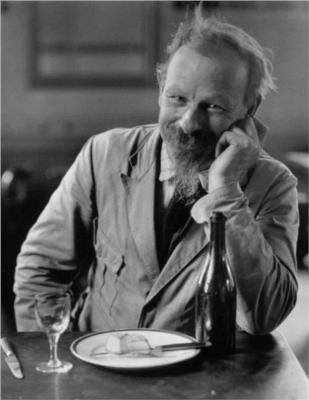
description
A French self-taught artist nicknamed the Gardener due to his occupation, but more because of his love for still lifes and landscapes. He also painted historical landscapes, mythological narrative canvases and portraits.
Having started his career as a painter at the age of 46, A. Bauchant created around 3000 paintings in 30 years. His exhibitions were held in many European countries, in the USA and Japan. He was the only French self-taught artist awarded the title of Chevalier of the Legion of Honor for his creative work and military service. Large collections of his works are in major museums in France and Germany.
Key ideas:
– Andre Bauchant made painting his main occupation at the age of 45. He useful various kinds of base for his first works: cardboard and paper sheets, wood, table towels, tins and so on. Actively visiting museums and exhibitions, reading many books on mythology and history, the artist first took a great interest in painting specifically on biblical, historical and mythological subjects, but also created still lifes and landscapes, portraits and genre paintings. He liked to combine plots with the presence of a man with landscape views of forests, gardens and fields.
– Andre’s figures of people and animals were awkward, static-frozen in a half-motion, flat, but expressive at the same time. Art critics note (and an inexperienced viewer feels) the painter’s special poetic attitude towards the depicted objects. These qualities associate with medieval paintings and frescoes, especially since Bauchant is often close to Giotto in the color gamma. Specialists have repeatedly emphasized his special manner of using unglazed surfaces, as did the masters of Quattrocento frescoes.
– There are a lot of portraits in the heritage of Bauchant, from which there are at least a dozen images of himself, among the flowers and with his first wife. Interesting is a series of self-portraits, in which the artist is already a gray-haired, respectable gentleman. It is as if Bauchant studied nature, depicting himself in full face, half turned, his profile and back. These portraits are different from the rest of the work: striving to achieve similarity, the artist worked through the features of the whole look and achieved realism in the depiction, while transmitting the psychological state of a person.
1873
1887
1900
1914
1918
1919
1921
1927
1928
1937
1940
1949
1950
1955
1958
The birth of the artist
Left school
Left school to become a farmer.
Having got married, Bauchant spent his honeymoon in Paris
Having got married, Bauchant spent his honeymoon in Paris, visited the art pavilion at the World Exhibition and bought his first books on history and mythology.
Was drafted into army
Was drafted into army in connection with the outbreak of the First World War, where he became a cartographer after a short training, as his ability to draw was revealed; traveled to Greece, where he made many pencil drawings.
He went to the telemetry experts competition
He went to the telemetry experts competition, where he became the first among 40 participants.
He finally decided to devote himself to his passion – painting
Having demobilized, he began to read a lot of literature on history and mythology, actively visit museums, as well as draw pictures on subjects from history and mythology. He finally decided to devote himself to his passion – painting.
Sent his 16 paintings to the Salon d'Automne
Sent his 16 paintings to the Salon d’Automne; 9 of them were accepted. He met Amedee Ozenfant and Le Corbusier, who became his first buyers and friends.
Received an order from S. Dyagilev
Received an order from S. Dyagilev for creating decorations for I. Stravinsky’s ballet “Apollon Musaget”.
Built his house with a workshop and studio in Auzouer en Touraine
Built his house with a workshop and studio in Auzouer en Touraine. In the Paris gallery, he organized his first solo exhibition, which included 75 canvases of different subjects.
Took part in the exhibition, organized by Audrey-Farsi
Took part in the exhibition, organized by Audrey-Farsi (the curator of the Grenoble Museum) in Paris. The exposition “Masters of Folk Painting”, in which the main self-taught artists from the capital of France were presented, went to London and New York.
Pictures of the artist were exhibited and sold throughout the world
Pictures of the artist were exhibited and sold throughout the world. However, during this period, a sad event happened – his wife Alfonsin died after a long illness.
His 215 paintings were exhibited at the gallery Charpentier in Paris
His 215 paintings were exhibited at the gallery Charpentier in Paris.
He was awarded the title of Chevalier of the Legion of Honor
He was awarded the title of Chevalier of the Legion of Honor for his artistic activities and military service.
He bought a huge house in the Loire Valley
He bought a huge house in the Loire Valley, created a studio on the first floor; worked and welcomed many friends and buyers of his paintings.
The death of the artist
The artist died on August 12 in Montoire-sur-le-Loir; was buried in the Avenue of Roses.

